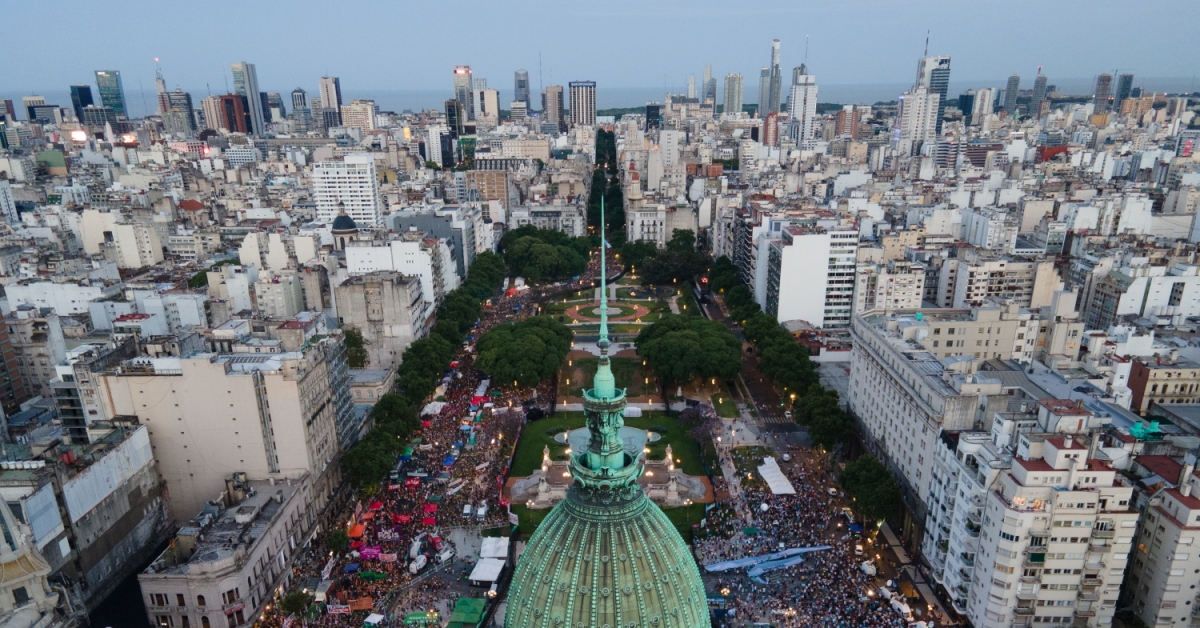At the start of 2020, Ripio, one of Argentina’s largest crypto exchanges, had around 400,000 users. It’s finishing the year with 1 million.
Ripio’s chief brand officer, Juan Mendez, told CryptoX that around 70% of Ripio users are from Argentina, with the remainder mostly concentrated in Brazil. According to Mendez, the platform also saw a tenfold increase in trading volume this year compared to last.
“I’ve been with the exchange pretty much from the beginning and I’ve never seen this kind of growth. This is bigger than the 2017 spike on operations and on demand,” Mendez said.
Argentina’s economic woes, from enormous debt obligations to high inflation, compounded by the COVID-19 pandemic, drove its population to seek alternative ways to store their wealth this year. But as the government limited U.S. dollar purchases by its citizens, crypto quickly proved to be the next best thing.
Along with Ripio, crypto exchanges operating in Argentina saw record growth in 2020, with some experiencing all-time highs in trading volumes towards the latter half of the year.
Mexico-based crypto exchange Bitso, which expanded operations to Argentina as recently as February of this year, has already seen a 68% increase in trading volumes on the platform in the third quarter of 2020 versus the second. Bitso’s move to Argentina also helped the platform pass the 1 million user milestone earlier this year.
Peer-to-peer (P2P) crypto trading platform LocalBitcoins also saw a 547% increase in trading volume between August 2019 and August 2020, with an all-time high of over $1 million worth of bitcoin traded in the second week of August this year. Another P2P platform, Paxful, saw near zero trading volume for the last five years, but trading picked up this year, recording a whopping 60641% increase from September 2019 and September 2020.
The unprecedented growth in Argentine crypto trades is reflected in a larger regional trend as LocalBitcoins and Paxful also saw record trading highs in a number of South American nations including Chile, Colombia and Bolivia. Business in the region is so good that, on Wednesday, CryptoX reported Bitso had raised a jaw-dropping $62 million to fund its expansion to Brazil.
The increase in the use of cryptocurrencies is taking place against a backdrop of devastating economic fallout from the COVID-19 pandemic, with the World Bank declaring Latin America and the Caribbean the “hardest hit” regions in the world.
Rather than hinder crypto use, the combination of the bitcoin price run, the inflationary economies created by countries desperately trying to mitigate the effects of the pandemic and the push for faster digital payments (particularly for cross-border remittances) drove adoption in South America this year.
Within this landscape, Argentina stands out.
Compared to hyperinflationary economies like Venezuela – whose economy is forecast to shrink by 6.8% in 2020 – Argentina seems even the worse for wear, thanks in part to a long and complicated economic history. In May, the government missed a $503 million interest payment on dollar bonds issued under New York law, putting the country into its ninth sovereign debt default in its history.
The nation’s GDP is set to contract by 12% this year, with nearly half its population already living in poverty.
“Cryptocurrencies are in a way allies for individuals, particularly in countries with a higher degree of political or economic uncertainty,” Andrés Ondarra, Bitso’s country manager for Argentina, told CryptoX via an email.
Catch-22
As Argentinians, nervous over the country’s deteriorating economy, increasingly buy U.S. dollars to store their wealth, the country’s reserves shrink, forcing the government to devalue the currency and place restrictions on how much in foreign currency citizens are allowed to hold.
In a bid to salvage dwindling reserves, in September Argentina’s central bank limited the amount of U.S. dollars citizens are allowed to purchase to $200 a month with a 35% tax.
This led to more problems: After difficult negotiations with creditors, the government had managed to successfully restructure $65 billion in foreign debt back in August, but thanks to investor concern over forex restrictions, newly issued international bonds fell sharply through September and people continued to buy dollars despite the tax.
Each time the peso is devalued people scramble to find a way to protect the value of their salaries, Mendez said. To top it off, early December, Argentina’s senate passed a one-time wealth tax on the country’s millionaires to help fund pandemic relief efforts.
Ondarra said Argentina is a peculiar crypto market due to its users’ permanent search for access to value reserves and diverse financial solutions.
“Argentinians are always trying to find a stronger currency,” Mendez said.
Enter crypto
According to Mendez, there’s a fundamental difference between crypto users in Argentina and Brazil, where Ripio also operates. The two nations are set apart because of the systemic economic failures of Argentina through the years, he explained.
“Argentina has had to overcome a lot of economic disasters over the years. We’re pretty much used to governments and strategic economic planning failing, and we are more willing to try different things in order to keep the country afloat,” Mendez said.
Mendez said Argentina’s topsy-turvy economic policy is perhaps reflected in the sudden spikes in trading on crypto platforms through the last few months.
For example, the government usually announces new financial restrictions in the late hours towards the end of the week (intended to be implemented the following Monday), Mendez said.
“So during the weekend and that whole week, we are always expecting a great demand for crypto,” Mendez said.
Argentinians see crypto as a great alternative store of wealth, even though his platform warns users that currencies like bitcoin are volatile digital assets, Mendez said.
Both Ondarra and Mendez agree Argentinians’ strong curiosity about alternative wealth reserves and increasing knowledge of cryptocurrencies have helped the growth of the local crypto space.
But Ondarra also attributes the rapid growth this year to the price run.
“An important factor that explains the increase in volume during the last months has been the upward trends in the price of bitcoin, which has undoubtedly kept people focused on the price action and led to higher trading volume,” Ondarra said.
He also explained that Argentine investors are closely watching the actions of big movers like MicroStrategy, which recently converted around $500 million of its cash investments from U.S. dollars to BTC.
This year, Argentina ranked 28 out of 154 countries in the Chainalysis crypto adoption index, with other Latin American countries including Venezuela, Colombia, Brazil and Peru placing ahead of Argentina as adoption in the region continues to grow at a rapid pace.
“It’s thriving. Everyone’s attention is focused on Latin America. And it’s growing fast,” Mendez said.




